Palmer DREI – the three from the petrol station – Product Review from amazona.de
Palmer Drei. Very rarely can a manufacturer be identified by the product name alone. This is even harder to achieve through a targeted choice of words in German-speaking countries, and therefore Palmer, which is based in Neu-Anspach near Frankfurt, deserves an extra point for marketing. “Mutterstolz (Mother’s pride)”, “Frohlocker (Rejoicer)” or “Herrenchor (Men’s Chorus)”…In addition to making you smile, the primarily German-inspired names generate more interest in the products compared to relatively meaningless names such as “2210” or “MD410”. 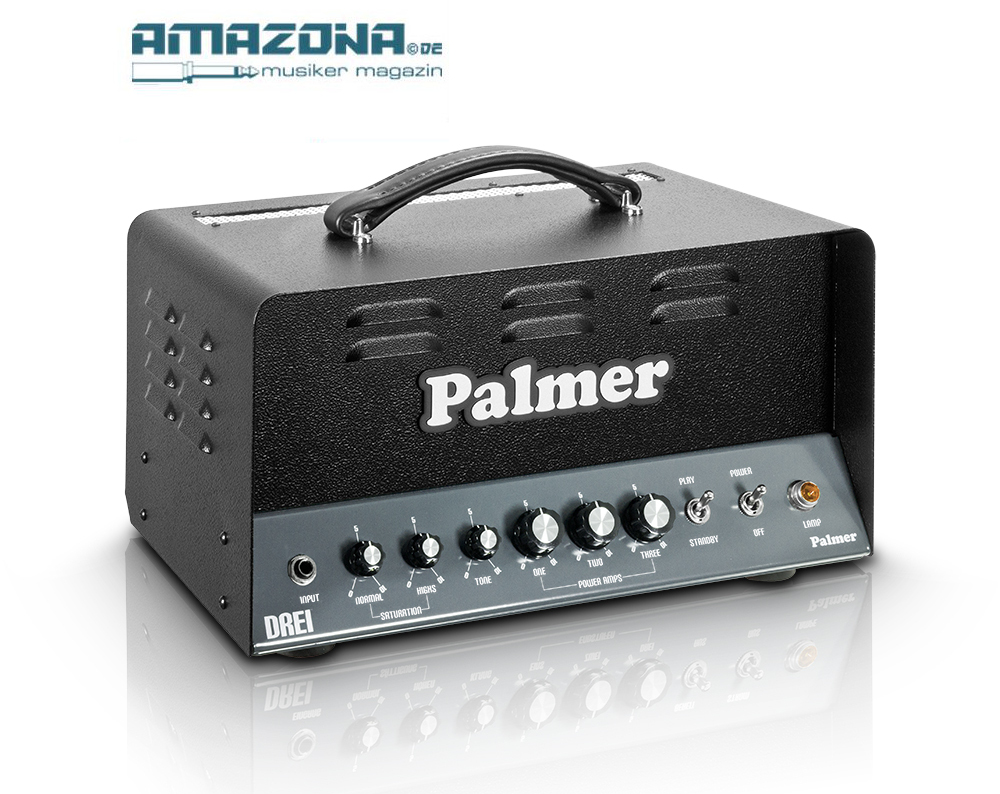
With the model Drei, Palmer is now advancing conceptually into a niche, which to my knowledge was not previously occupied. I can already hear the first sceptics say:”big words”, or “what could truly constitute a new design on an amplifier, that has not already been tried before by anyone on this planet?” You’ll be surprised: it all depends on the concept.
Construction
In order to realise the true innovation of the Palmer Drei, we have to start from the beginning. We all know how complex and very different the subjective perception of a good sound is for guitarists. While the ambitious blues player considers a subtle saturation in the tube amp with a hint of crunch to be heaven-sent, the heavy metal brigade seeks the greatest level of gain to achieve new records every day in the half-wave clipping. Conclusion: Black Metal Grunzi believes the authentic blues sound to be listless plucking, whereas “I Woke Up This Morning” Billy will dub Grunzi’s mega low-frequency compression an acoustic pollution. By the way, the fusion freak from the second floor considers both representatives as harmonious nihilists and is firmly convinced that only he knows the perfect essence of the ultimate sound of a guitar. 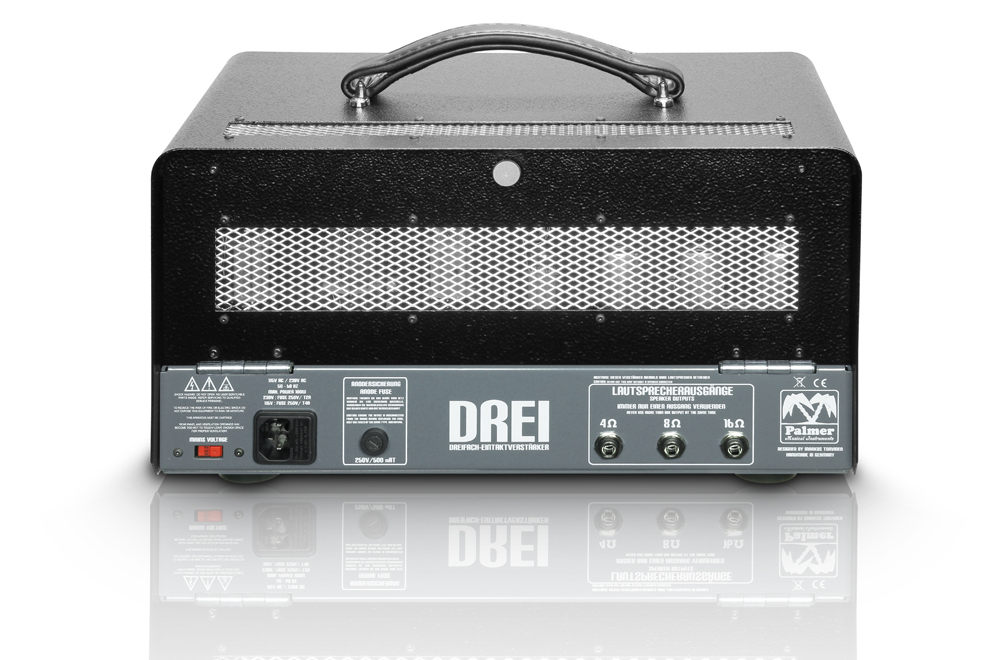
Apart from the fact that the choice of instrument is a very personal thing, the amplifier deserves the greatest attention when it comes to sound. Of course, there are now appropriate amps for every style. However, the problem is that almost all high-priced amplifiers have AN official sound, while deviations from this sound are considered less desirable. The majority of manufacturers address this phenomenon with multiple channels, which primarily take into account the effects of the preamp, while the power amplifier, once the tubes choice is made, does its work and contributes to the ONE official sound. It is well known that the basic design of an amplifier is strongly dependent on the output tube used, which plays a major part in defining the final sound of the amplifier in the signal flow.
This is where the unusual construction of the Palmer Drei comes into its own. The amplifier features three single-ended amplifier tubes of the EL84 , 6V6, and 6L6 types, which can each generate a power of five watts and combine their power over separate volume controls. In the end, this means that simply by choosing the amplifier tubes at the start, you have three different basic sounds which produce their individual sound image through additional mixing if necessary. Also, the rectification is achieved with a GZ34 tube. You may be wondering why I’m starting with the final stage of the amplifier and not as usual with the preamp stage. The answer is quite simple. The different power amplifiers are the amplifier! 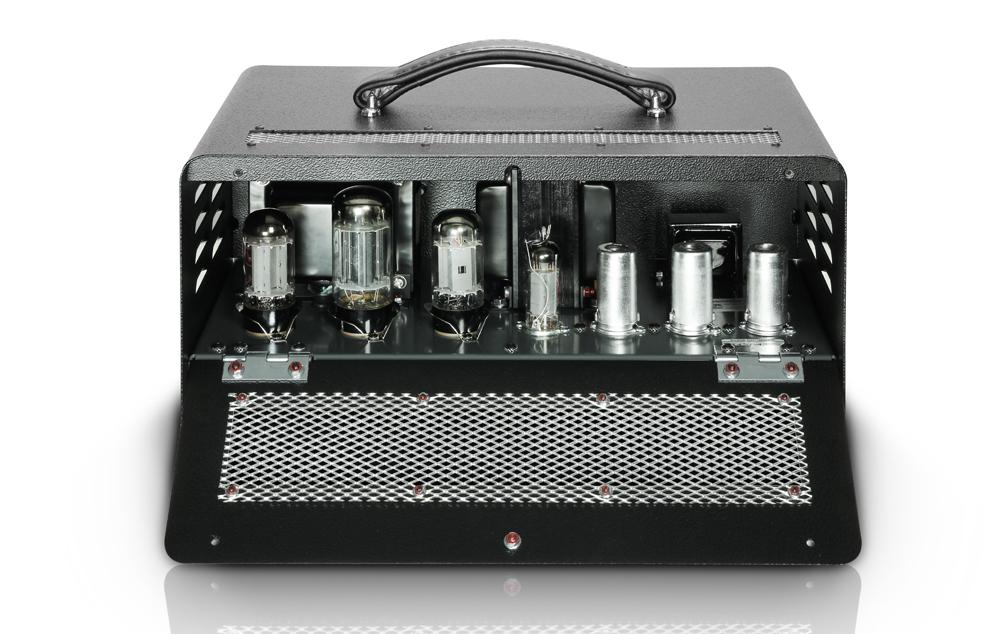
A brief description of the Palmer Drei illustrates this fact. In the description on the front panel (in German), we find only three controllers in addition to the volume controls for the end tubes at the “input” socket. The two gain controllers of the amplifier are subdivided into “Normal” and “Highs” that impact on the degree of saturation of the end tubes, whereby “Highs” only influences the high frequencies. Next to it is the “Tone” controller, which is comparable to the tone control of an electric guitar, meaning you can reduce the highs and add muddyness to the sound. The fusion freak from the second floor would be very pleased.
Also “Play” and “Power” (standby and power are so “last season”) in the form of two massive toggle switches and the front panel is ready. On the back panel, there are three outputs for 4, 8 and 16 ohms, an IEC connector, and a fuse access. It doesn’t get any more purist than that. A brief word about the craftsmanship: ‘perfect’ is an understatement. Although the entire product range of Palmer always stands out with extremely high quality workmanship, the Drei has managed to reach an even higher level. An almost martial-themed 2.2 mm steel frame in combination with high quality components almost conjure up an image of an international mission of the UN peace choir. I believe here that even if cognitively challenged “cable Willie” from the country inn rolled over it with his van, it would not even make a dent. All screw points have machine threads, the potentiometers are from Alpha, the cleanest possible board fitted with protections of all kinds – exemplary!
Practice Run
Due to the purist design of the amplifier all control elements are self explanatory, meaning, you can follow your play instinct to your heart’s content, without leading the sound completely to the point of absurdity. Starting with a clean sound, you can get an idea from the first try, how differently the individual end tubes shape the sound. Whilst not generating a brilliant sound, using both the tone controller and a harmonised maximum saturation, the Palmer Drei does produce wonderfully soft and warm magical sounds. 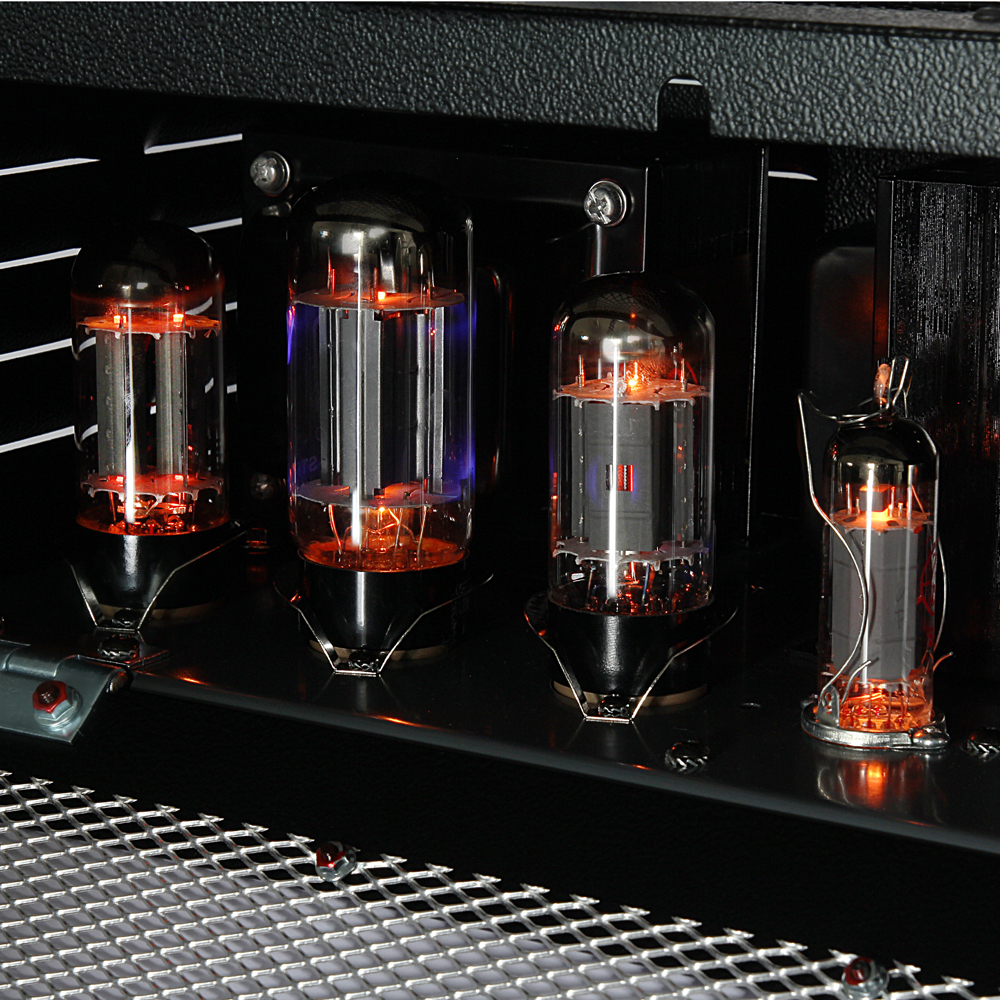
Here, the EL84 ensures the sparkling treble-rich sound of British heritage, which comes close to the EL34 in the performance class above. When using the next controller to the right, sounds from the other side of the Atlantic can be heard. Classics from Fender have been using the 6V6 for decades to generate their characteristic sound. Comparatively warm and soft, especially the low frequency sounds can be very nicely teased out, which is why this tube is often used when mixing for the bass. The last of the trio comes the 6L6, which has an unusual property: at low load, it sounds thin and sharp, but at increasing volume, the high proportion of mids provide an impressive high pressure. As expected, the amp also relies quite heavily on the volume controller and can be adjusted down from distorted to clean.
Sound examples below:
http://www.amazona.de/test-palmer-drei-gitarrenverstaerker/
Now we come to the highpoint of the Palmer Drei, the crunch. Here lies the biggest misunderstanding that can be blamed on the amp. I can vividly imagine, how many musicians have loved the crunch sound of the amp, but have spurned it due to the moderate maximum distortion level, without knowing exactly what the strength of the amps was. In my entire career, I’ve never encountered an amplifier that harmonised so well with upstream overdrive distortion pedals. The amplifier takes the typical characteristics of the pedal and enhances it with a purist tube sound, optionally with a continuous amplifier saturation in two frequency ranges.
The result is fantastic! Instead of cluttering an amplifier with channels, it makes in my opinion considerably more sense to generate the perfect basic sound, then, depending on the taste of artists, to create his final sound with the right pedal. This effect is created to perfection with the Palmer Drei. Buy 5 pedals, from subtle blues crunch up to the ultra-metal board and actually you have a five channel amp that you can also align in three basic directions or even mix together. This is great for both Billy and Grunzi, not to mention the fusion freak from the second floor. 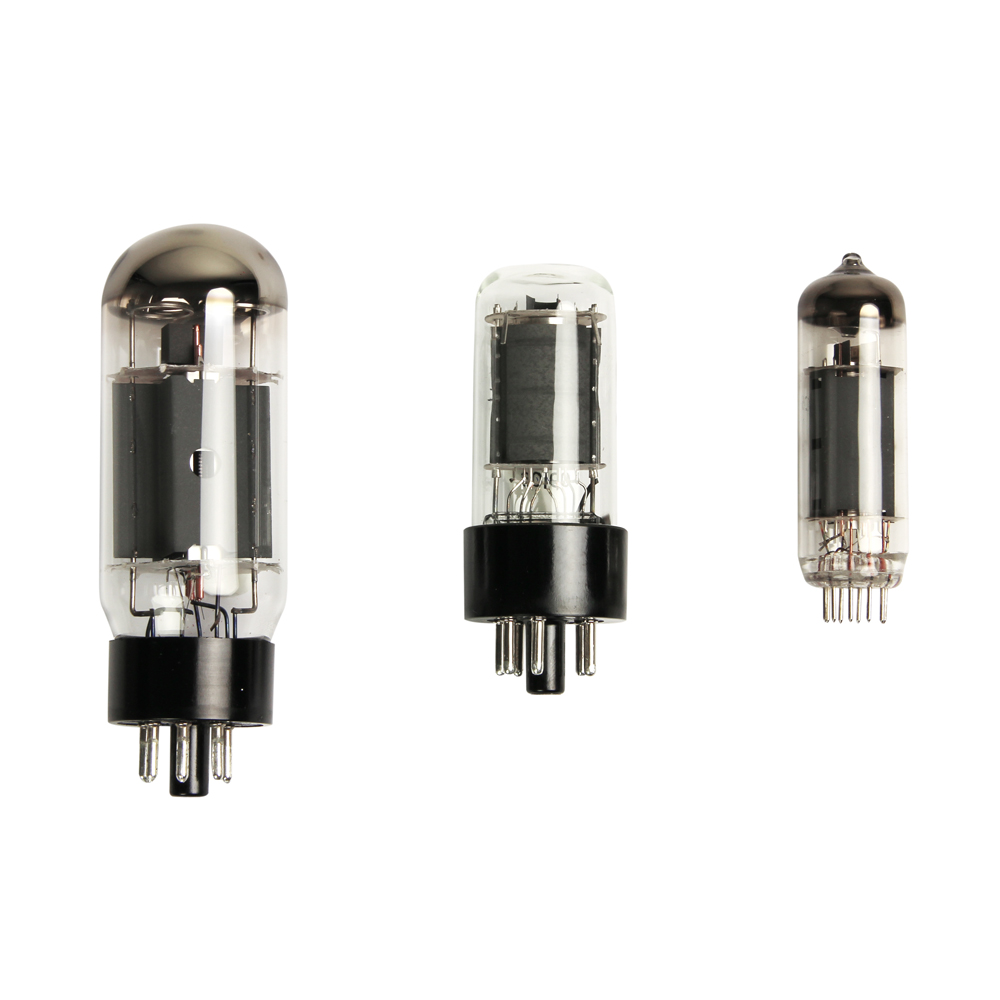
Conclusion
With the Palmer Drei, a unique concept of sound meets technical perfection. The construction aimed primarily at the power amplifier provides excellent clean and crunch sounds, that lead the amp to full bloom when used in combination with floor pedals. Thanks to the purist design, almost any style can in fact be implemented by using the appropriate ‘anti-personnel mines’, which are gaining in sound diversity through the different end tubes. An absolute exceptional amp that will satisfy almost every guitarist with a little foresight. Be sure to test it or there will be a two-hour forced debate with the fusion freak about what colour a 335 should have, and whether there are supposedly other types of guitars in the world!
Test Setup: Flaxwood Äija SD Stegpickup – Koch KS112 Celestion – Fame F47 Vintage Mikrofon – TLA A3 Preamp
Pros
• sound
• concept
• craftsmanship
• details
Cons
–
Price
RRP: € 1100
For additional information, go to:
http://www.palmer-germany.com/mi/en/DREI-Triple-Single-Ended-Amplifier-PDREI.htm
Source: www.amazona.de, Germany, April 2014
Author: Axel Ritt
Leave a Comment
You must be logged in to post a comment.












